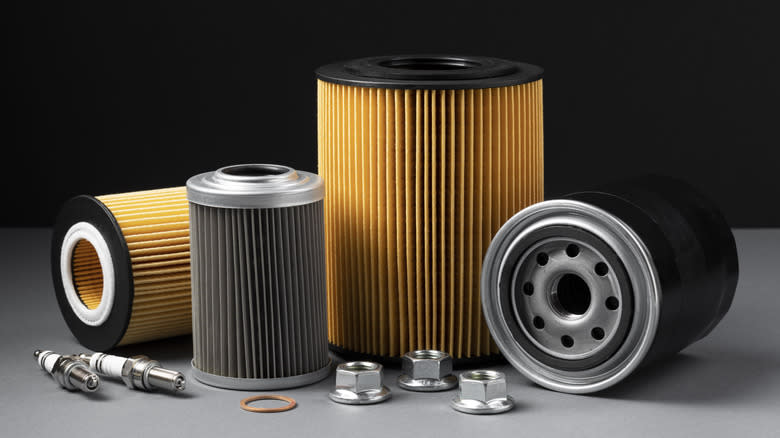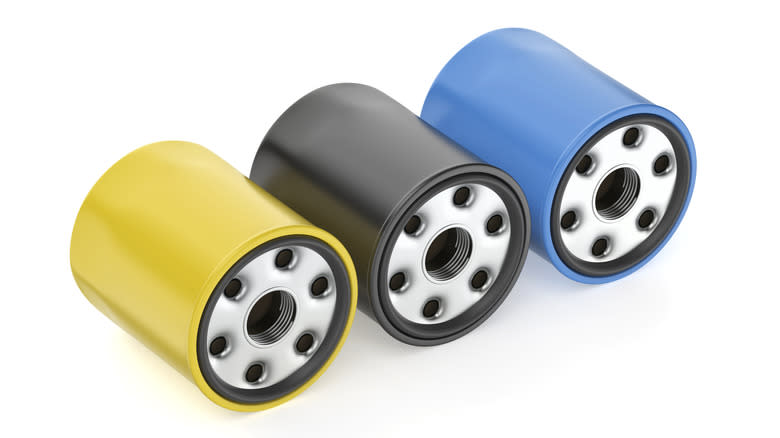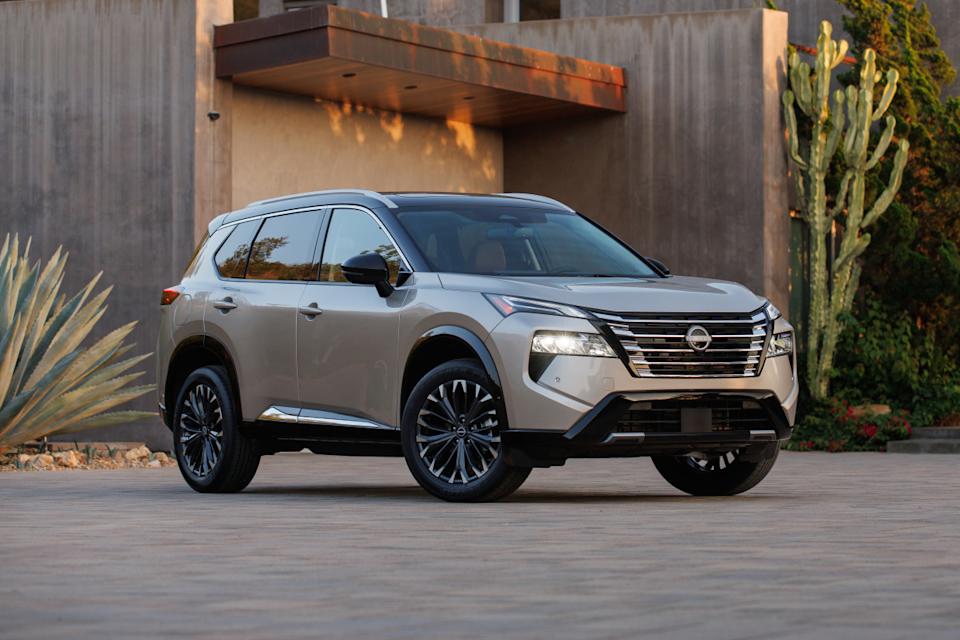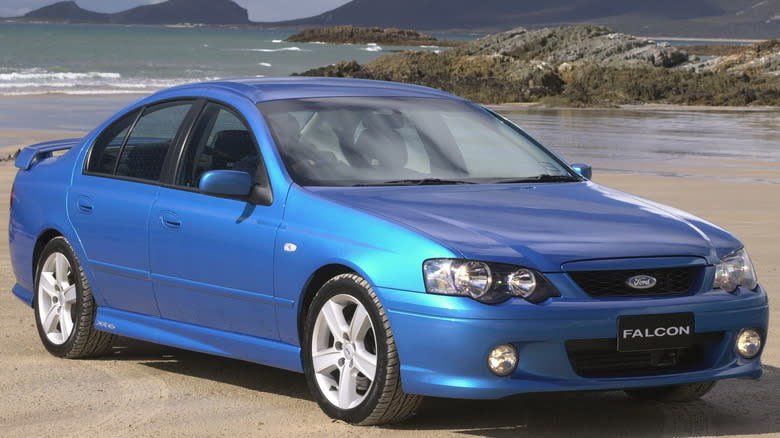
Before we dive headfirst into the fascinating topic of oil filters, let's address the title of this article real quick. At first glance, it could be construed that we are of the mind that spin-on oil filters predate cartridge filters; in fact, the opposite is true. Cartridge filters are definitely an older technology that was displaced in many vehicles starting in the mid-20th century, when spin-on oil filters were invented. Cartridge filters never totally went away, though, and they're experiencing a huge resurgence at present.
Whether it's the cartridge or spin-on type, oil filters are one of the most important components of an engine, which is ironic since their cost is so modest; almost certainly less than $20 and possibly less than $5 if you're a dedicated Walmart shopper. Oil filters remove contaminants like flecks of carbon, dust, and tiny metallic particles that result from engine wear. That keeps your oil clean in the miles driven between oil changes, which are less frequent than ever in this age of superior oil technology. That said, there's a limit to the size of particles that a typical oil filter can remove without creating a restriction to oil flow. If you want finer filtration still, consider installing a bypass oil filter in addition to the factory full-flow filter.
Read more: Save Your Engine: 5 Tips For Preventing And Cleaning Carbon Buildup
Pay Attention With Either Style Filter

The first oil filters debuted over 100 years ago, in 1923. Prior to that, engines either used no filter at all or, at best, an ineffective metal screen. Those early oil filters were all cartridge style because the spin-on type wasn't invented until 1954. When a modern cartridge-style oil filter is purchased, the package typically contains only the naked pleated filter element itself, plus a pair of new o-rings; one for the filter housing and one for the housing's center tube. The center tube returns oil to the engine and gives the cartridge filter its rigidity. The filter housing, often plastic, is reused many times or possibly forever if it stays in good condition.
On the other hand, spin-on filters are self-contained. The filter media is sealed inside a metal canister with an integral gasket or o-ring already pre-installed. Like the name implies, you simply screw it onto a male-threaded mounting boss on the engine once the old filter has been removed. It's worth mentioning that with spin-on filters, you should double check that the old gasket or o-ring came off with the old filter and didn't stay attached to the engine block. Otherwise, the two stacked gaskets will create sealing problems, at a minimum. Whether tightening either a cartridge oil filter housing or a spin-on filter, make sure it's not cross-threaded, nor screwed on too damn tight.
Cartridge-Style Oil Filters Are More Eco-Friendly

Shortly after its introduction, the spin-on filter dominated the market, particularly among American auto manufacturers that re-engineered their engines to accept this new invention. For example, the most produced engine ever, Chevy's small-block V8, was converted from cartridge to spin-on filter in the mid-1960s. The spin-on filter was considered to be quicker and easier to replace, although that's certainly debatable. A cartridge oil filter mounted on top of an engine is arguably easier and neater than wrestling with one attached to the bottom of an engine block under the car.
So while the spin-on oil filter was the latest and greatest for a while, plenty of cars continue to use cartridge filters to this day. That's especially true of European brands and German marques in particular. Recently, cartridge oil filters are regaining ground versus the spin-on type amongst automakers because of environmental concerns. Cartridge filters are just more environmentally friendly, since unlike a spin-on filter, most of the assembly gets reused and there's no integrated dirty metal housing that requires disposal again and again.
According to parts manufacturer Ecogard, more than 70 million used automotive filters are disposed of each year in the state of California alone. Furthermore, the amount of steel contained in one year's worth of discarded spin-on oil filters from just California is enough to build three sports stadiums. Regardless of what type of oil filter your vehicle uses, the quality and filtration ability of the element inside is what's really important. Hmm, maybe that $2.97 Walmart oil filter isn't such a great idea after all?
Want more like this? Join the Jalopnik newsletter to get the latest auto news sent straight to your inbox...
Read the original article on Jalopnik.








Comments